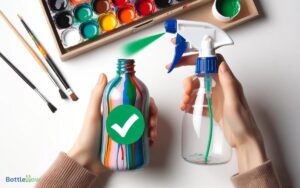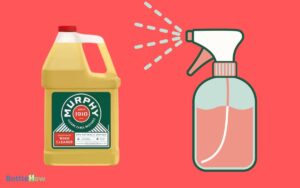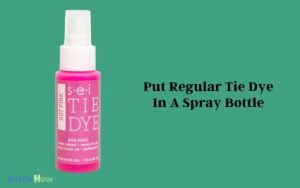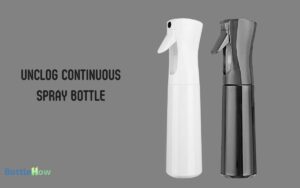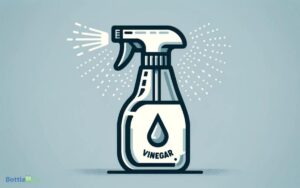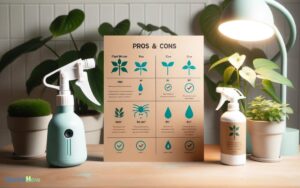Can You Put Gel Hand Sanitizer in a Spray Bottle? Yes!
You can technically put gel hand sanitizer in a spray bottle, but it’s not ideal. Gel sanitizers are thick due to agents like carbomers, which can clog the spray mechanism.
This clogging disrupts the proper functioning of the bottle and can lead to uneven application, reducing the sanitizer’s effectiveness against germs.
Additionally, the aerosolized droplets might pose inhalation risks or cause eye irritation. If a spray format is preferable, consider liquid sanitizers designed for spraying or explore DIY recipes that cater specifically to spray bottles.
There are optimal ways to maintain efficacy and safety with these alternatives.
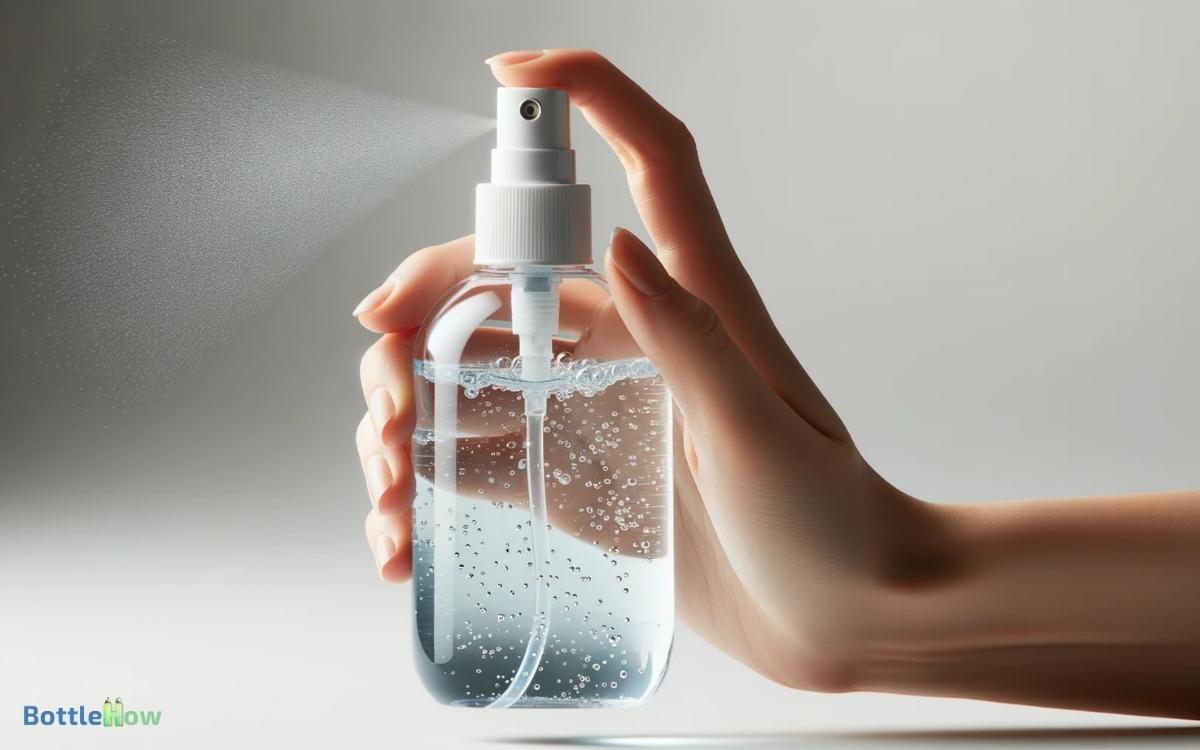
Key Takeaways
Understanding Hand Sanitizer Formulations
Hand sanitizers typically come in various formulations, each designed to effectively kill germs and bacteria on your skin.
You’ll find alcohol-based sanitizers most common, which generally contain between 60% and 95% alcohol, primarily in the form of ethanol, isopropanol, or n-propanol.
Non-alcohol-based versions usually include disinfectants like benzalkonium chloride or triclosan, though they’re less prevalent.
Additionally, some products incorporate moisturizers such as glycerin to prevent skin dryness, enhancing user comfort and promoting frequent use.
Each ingredient plays an important role in ensuring the sanitizer’s efficacy while also considering skin health.
It’s essential you understand these components, as they directly affect the product’s texture, effectiveness, and suitability for varying skin types.
Effectiveness of Sprayed Gel Sanitizer
While understanding the basic formulations of hand sanitizers is important, evaluating the effectiveness of sprayed gel sanitizers offers insights into their practical benefits and limitations.
When you spray gel sanitizer, the altered consistency might affect its distribution on your hands.
Typically, gel sanitizers are designed to coat your hands thoroughly, which mightn’t occur effectively if sprayed, especially if the gel’s viscosity prevents a fine mist. This could lead to uneven application, reducing the sanitizer’s ability to kill germs uniformly.
Additionally, the concentration of alcohol — key to destroying pathogens — must remain high enough in the gel formula even when sprayed.
You’ll need to make sure that the alcohol content doesn’t dilute during the spraying process to maintain its germicidal efficacy.
Safety Considerations for Spraying
When contemplating the use of gel hand sanitizer in a spray bottle, it’s important to assess potential safety hazards, such as inhalation risks and eye irritation.
Spraying sanitizer increases the likelihood of aerosolizing the product, which can lead to respiratory discomfort if inhaled. You should always use it in a well-ventilated area to minimize these risks.
Additionally, the high alcohol content in many sanitizers can cause severe eye irritation upon contact. It’s essential to aim the spray away from your face and others nearby.
Wearing protective eyewear can provide an extra layer of safety, especially in settings where spraying is frequent.
Always make sure that everyone involved understands these precautions to prevent accidental exposure.
Potential Clogging Issues
Beyond safety concerns, you may also encounter practical issues, such as the potential for the gel sanitizer to clog the spray mechanism.
The viscosity of gel-based hand sanitizers typically includes agents like carbomers, which thicken the solution to create a gel-like consistency.
When you attempt to dispense this thicker gel through a spray bottle, which is designed for much thinner liquids, it can lead to clogging.
This clogging can occur at the nozzle or within the internal pump system, obstructing the pathway and preventing the sanitizer from being dispensed effectively. It’s important to understand that spray mechanisms are optimized for different viscosities.
Using gel inappropriately in these devices not only hampers their functionality but can also reduce the overall effectiveness of the sanitation process.
Alternative Sprayable Sanitizer Options
If you’re seeking alternatives to gel-based sanitizers in spray bottles, you have a couple of practical choices.
You can explore DIY spray sanitizer recipes that allow for customization and potentially avoid the clogging issues associated with gel sanitizers.
Alternatively, numerous commercial spray sanitizers are available, offering a ready-to-use solution with varied scents and additional skin-moisturizing ingredients.
DIY Spray Sanitizer Recipes
You can create effective spray sanitizers at home using simple ingredients like isopropyl alcohol, essential oils, and aloe vera gel.
These components are not only accessible but also allow you to customize your sanitizer to suit your preferences and needs.
This approach not only guarantees you have a reliable product but also enables you to cater to the specific needs of those you care for, safeguarding their safety and comfort.
| Ingredient | Purpose |
|---|---|
| Isopropyl alcohol | Acts as the primary disinfecting agent. |
| Essential oils | Provide fragrance and can have additional benefits. |
| Aloe vera gel | Soothes the skin and acts as a thickening agent. |
Commercial Spray Sanitizers
Many commercial spray sanitizers offer a convenient alternative, providing effective germ-killing action with the ease of a quick spritz.
These products are specifically formulated to guarantee maximum efficiency in a spray form, typically containing alcohol concentrations of at least 60%, which is the minimum percentage recommended by health authorities to eliminate most bacteria and viruses.
When you’re considering options, it’s essential to check the label for active ingredients like ethyl alcohol or isopropyl alcohol, as these are key indicators of the product’s ability to disinfect properly.
Additionally, some brands include moisturizers or essential oils to reduce skin dryness and provide a pleasant scent.
Opting for these ready-made solutions can save you time and ensure you’re using a product designed for safe and effective application.
Best Practices for DIY Sanitizer Sprays
When making your own sanitizer sprays, it’s essential to select proper ingredients that guarantee both efficacy and safety.
You’ll need to comprehend precise mixing techniques to achieve a consistent solution that remains stable over time.
Lastly, make sure the spray bottle you choose is compatible with alcohol-based sanitizers to prevent material degradation and leakage. This ensures the bottle remains durable and functions properly over time, reducing the risk of spills or breakage. Additionally, checking the manufacturer’s guidelines can help you determine if the bottle is safe for repeated use with strong cleaning solutions. If you’re wondering how to dilute Mr. Clean for use in a spray bottle, refer to the label instructions to achieve the right balance of cleaning effectiveness and safety.
Selecting Proper Ingredients
How do you choose the best ingredients for your DIY sanitizer spray to guarantee effectiveness and safety?
First, make sure the primary active ingredient is isopropyl alcohol or ethanol, at a concentration of at least 60%. This level is essential for effectively killing viruses and bacteria.
Opt for aloe vera gel or glycerin as a secondary ingredient to counteract the drying effects of alcohol on your skin, promoting moisture without compromising the sanitizer’s germ-killing function.
Essential oils like tea tree or lavender can be added for their antimicrobial properties and to improve scent.
Always source high-quality, pharmaceutical-grade components to avoid contaminants that could reduce the efficacy of your sanitizer or harm skin health.
Mixing Techniques Explained
To guarantee your DIY sanitizer spray is both effective and safe, begin by thoroughly mixing the isopropyl alcohol or ethanol with aloe vera gel or glycerin.
This foundational step guarantees the alcohol, which acts as the disinfectant, is evenly distributed throughout the gel or glycerin, which serves as a moisturizer to protect your skin. Stir the mixture until it is smooth and the ingredients are fully blended.
| Ingredient | Purpose |
|---|---|
| Isopropyl Alcohol | Disinfectant |
| Aloe Vera Gel | Skin Protection |
| Glycerin | Moisturizer |
Spray Bottle Compatibility
Selecting the right spray bottle is essential for the effectiveness and usability of your DIY sanitizer spray.
You’ll want to opt for a bottle that can handle the viscosity of gel-based sanitizers once they’re properly diluted.
Look for bottles with adjustable nozzles that allow you to control the spray pattern from a fine mist to a more direct stream.
This feature is particularly useful in ensuring that the sanitizer covers your hands or surfaces evenly without wasting product.
Ensure the material of the spray bottle is compatible with alcohol, a common component in hand sanitizers.
Plastic bottles made from PET or HDPE are typically resistant to alcohol and are durable choices for your sanitizer needs.
Conclusion
You might be tempted to transfer your gel hand sanitizer to a spray bottle for convenience, but be cautious.
Spraying can reduce efficacy; a study found that gel formulas lose up to 10% of their alcohol content when atomized, potentially falling below the CDC’s recommended 60% alcohol concentration for effectiveness.
Instead, consider purchasing a sanitizer specifically formulated for spraying. Always aim for products that guarantee safety and efficiency to maintain peak germ-killing power.

